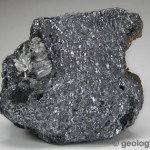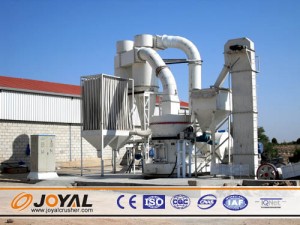

 Ore mining jaw crusher initially preliminary broken, broken to a reasonable fine in the post-degree via elevator, vibrating feeder evenly into the ball mill, the ball of the ore crushing, grinding. After ball mill grinding of ore fines divide into the next process: classification. Spiral classifier with different proportion of solid particles in liquid precipitation at different speeds in principle, on the mineral mixture wash, grade. Mineral particles in the flotation machine were sent, depending on the mineral characteristics of different drugs, which make the minerals and other substances separate.
Ore mining jaw crusher initially preliminary broken, broken to a reasonable fine in the post-degree via elevator, vibrating feeder evenly into the ball mill, the ball of the ore crushing, grinding. After ball mill grinding of ore fines divide into the next process: classification. Spiral classifier with different proportion of solid particles in liquid precipitation at different speeds in principle, on the mineral mixture wash, grade. Mineral particles in the flotation machine were sent, depending on the mineral characteristics of different drugs, which make the minerals and other substances separate.
In the early days of Broken Hill, zinc ore was rejected to the waste dumps because virtually none of the zinc could be extracted economically. Gravity and magnetic separation methods were unsuccessful but in 1901 a flotation process was devised at Broken Hill which achieved recoveries of the zinc minerals from ore upwards of 60%. After considerable experimentation, a selective flotation method which worked on a commercial scale was perfected in 1912. Improved versions of this flotation process, such as the Australian-developed Jameson flotation cell are used world-wide today. The Jameson flotation cell is installed in many mines around Australia.
Almost all of Australia’s zinc mines are underground operations and are highly mechanised. Ore is drilled and blasted in large volumes, transferred to underground rock crushers by large loaders and trucks before being hoisted to the surface in skips or driven directly to the surface by truck via a spiral access tunnel called a decline. Century is Australia’s only large surface open pit zinc mine where ore extraction is by similar methods but hoisting is not required.
At the surface, the ore is subjected to additional crushing and fine grinding. The flotation process is then used to separate the zinc and other valuable sulphide minerals from the waste rock particles or tailings to form a concentrate.
Ground ore, water and special chemicals are mixed and constantly agitated in banks of flotation cells. Air is blown through the mixture in each cell, and the fine zinc sulphide particles stick to the bubbles which rise to form froth on the surface of the flotation cell. The tailings sink and are removed from the bottom of the cell. The froth is skimmed off and the resulting zinc sulphide concentrate is dried. This process upgrades the ore, which may contain only 6% zinc, to a concentrate assaying more than 50% zinc. Up to 90% of the zinc in the ore can be recovered.
Electrolysis and smelting are the two processes used to produce zinc metal in Australia. The electrolytic process is used at the Risdon zinc refinery in Tasmania where zinc concentrate from various Australian mines is roasted to eliminate most of the sulphur as sulphur dioxide and make impure zinc oxide. The roasted concentrate is then leached with sulphuric acid to form zinc sulphate solution. The zinc sulphate solution is purified by adding a small amount of zinc powder to precipitate and remove traces of copper, cadmium, cobalt and nickel. The solution is piped to electrolytic cells where the zinc is electrochemically deposited on aluminium cathodes (electrodes). The zinc is removed from the cathodes, melted in a furnace and cast into slabs.
The smelting process is used at Cockle Creek near Newcastle in New South Wales, to produce zinc and lead metal simultaneously in a blast furnace. Zinc and lead concentrates from various mines are blended and sintered or partly melted to combine the fine particles into lumps and remove some sulphur as sulphur dioxide. The sintered product is mixed with coke and smelted in a blast furnace to produce zinc vapour (gas), which is condensed by cooling with a spray of molten lead to form impure molten zinc metal (98.3% zinc). To remove the small amount of lead and cadmium impurities the liquid zinc is twice boiled to zinc vapour and recondensed to produce high purity zinc metal (up to 99.95%).
At Port Pirie, zinc is recovered from the lead smelter slag or molten waste, which contains about 17% zinc, and residues from the Risdon zinc refinery in Tasmania. The molten slag is heated further to drive off zinc and some lead vapour, which is oxidised to form a zinc oxide fume and filtered out as dust in a bag filter. This dust is ground and put through an electrolytic refining plant to produce high purity zinc.
Primary refined zinc is produced at three plants – Risdon in Tasmania, Cockle Creek in New South Wales, and Port in South Australia, while production at the new Townsville zinc refinery in Queensland is expected in late 1999. Small production of secondary refined zinc occurs at Port Kembla in New South Wales. Zinc oxide and zinc dust is produced from primary and scrap zinc at West Footscray in Melbourne, Victoria and in minor amounts in Brisbane, Queensland.
Risdon is Australia’s largest zinc refinery and also one of the largest in the world. Overall zinc recovery from concentrates is about 95%. Less than half of Australia’s zinc concentrates are processed domestically.
Lead and Zinc Ore Crusher and Grinding for Australia Quarry Mining
 For better lead and zinc mine crushing and grinding solution, we suggest choosing suitable lead and zinc ore crusher and grinding mill manufacturer which owns reliable trust along with the products. It’s better to design special lead and zinc ore crushing solution by experts.
For better lead and zinc mine crushing and grinding solution, we suggest choosing suitable lead and zinc ore crusher and grinding mill manufacturer which owns reliable trust along with the products. It’s better to design special lead and zinc ore crushing solution by experts.
It’s rarely seen for the pure lead mine or pure zinc ore. They are usually symbiotic with each other to form multi-metal ores. Lead and Zinc ore resources are mainly in Australia, the United States, Canada, Peru, South Africa, Kazakhstan, Mexico and other countries.
In lead and zinc concentrator, raw materials are first sent into primary crushing station through rom hopper. It can make more effective fragmentation by implementing appropriate crushing method according to the mechanical strength characteristics of lead and zinc mine. In the primary crushing station, lead and zinc crusher is usually jaw crusher or gyratory crusher with high capacity and big input-size.
After meeting the required fineness, they are sent into sag mill by belt conveyor for further pulverization. Ball mill is widely used as lead and zinc mill in the Lead and Zinc Concentrator.